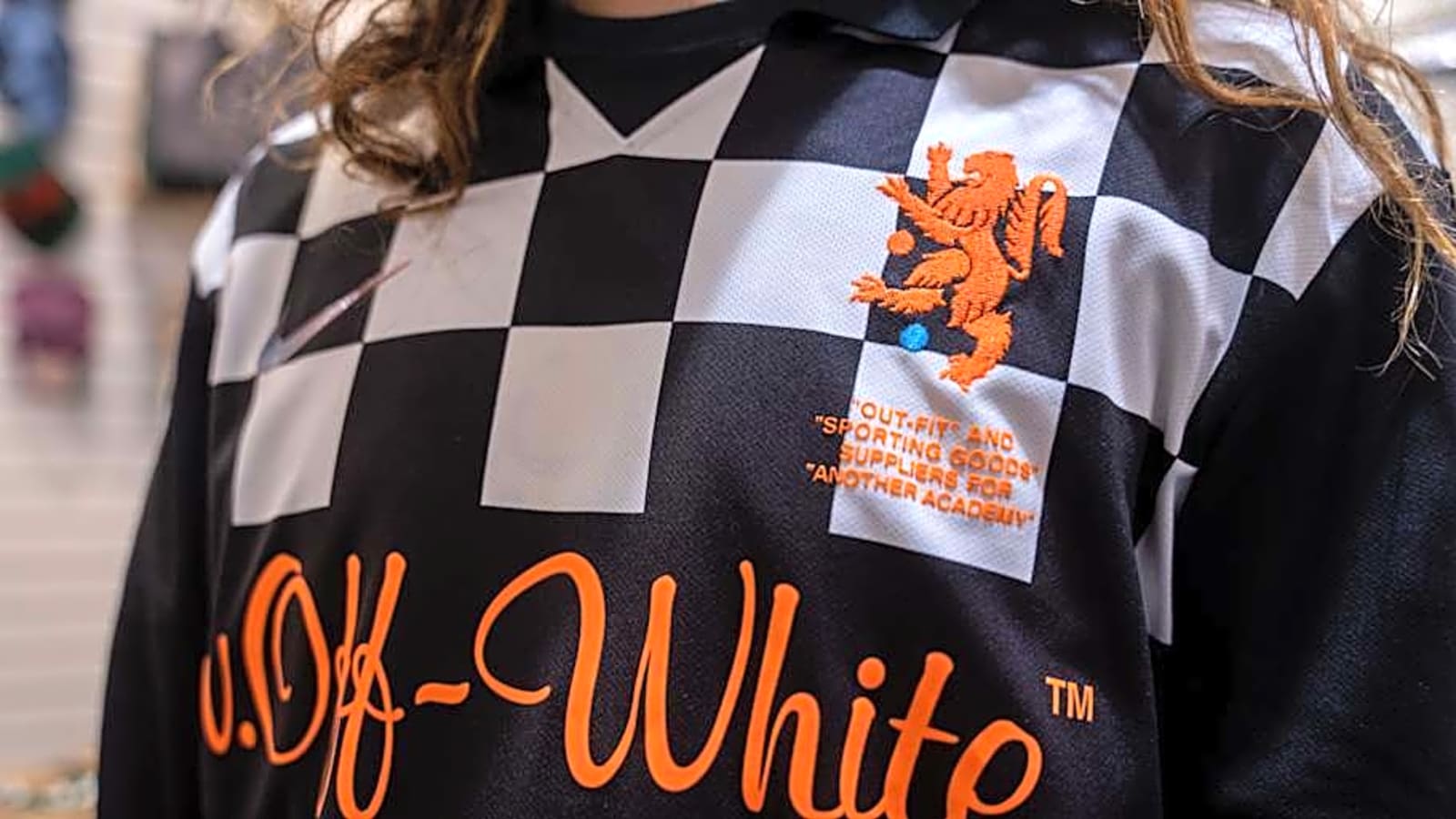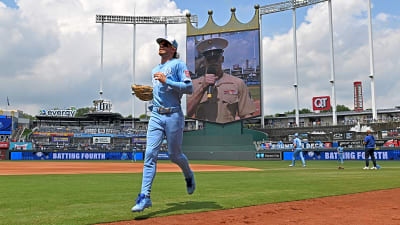
HOUSTON — These are the words that have long been weaponized against Black fashion, particularly in the 1980s, when hip-hop culture was erupting from the five boroughs of NYC, and redefining what it meant to be seen.
Baggy jeans, oversized jerseys, gold chains, acrylic nails, bamboo earrings, and custom sneakers weren't just trends; they were declarations of style.
They represented pride, resistance, and individuality in a world that tried to erase them.
But to the mainstream eye? These looks were "too urban," "too aggressive," "too much." Meanwhile, designers and tastemakers behind closed doors were watching, taking notes, and preparing to repackage Black style stripped of its cultural roots for their runways and profit margins.
Fast forward to the late 2020s, and the same fashion staples once dismissed as "ghetto" are now luxury-coded, sold for four figures, and praised as "innovative" as long as they're not being worn by the people who created them. The blueprint remains Black. But the credit? Still missing.
Black Designers Built the Blueprint
When we discuss Black fashion visionaries, names like Dapper Dan and Virgil Abloh immediately come to mind, and rightfully so.
Dapper Dan transformed Harlem into a runway in the '80s and '90s, remixing high-end logos and silhouettes for the block before luxury brands had any interest in catering to Black consumers.
He was raided and blackballed, only to be invited decades later to partner with Gucci, the same brand that once rejected him, then copied his designs without acknowledgment. His story is a lesson in both resilience and reclamation.
Then there's the late Virgil Abloh, who didn't just shake the table; he rebuilt it. As the first Black artistic director of Louis Vuitton and the founder of Off-White, Abloh infused streetwear, architectural design, and cultural commentary into a space that had historically excluded people who looked like him. He once said, "Everything I do is for the 17-year-old version of myself," and that mission reflected in everything from his sneaker drops to his runway shows.
Let's note that these two individuals were the exceptions, not the norm. Their journeys were challenging. Their genius was undeniable, yet the systems around them were not designed to nurture or celebrate Black creativity on a large scale.
From Marginalized to Monetized
Black fashion has always been more than fabric. It's a language, a legacy, and a lifestyle. How is it that the same durags once banned in schools are now featured in European runway collections? Why are laid edges, acrylics, long braids, and grills only seen as high fashion when disconnected from the people who originated them?
It's a familiar cycle: Black style is policed when we wear it, and praised when others do.
When young Black girls wear long nails and bold colors, it's called "ghetto." When white influencers do the same, it becomes a "Y2K trend." Our hood fashion is their runway inspo. Our everyday expression becomes their seasonal aesthetic.
This isn't appreciation, it's appropriation with a price tag.
Digital Drip, Real Exploitation
This commodification of Black fashion doesn't stop at clothing racks or runways; it's also embedded in digital spaces, such as video games like NBA 2K25.
Players can customize their avatars with outfits that mirror Black streetwear culture, featuring designer puffer jackets, fresh sneakers, gold chains, and, yes, durags.
But here's the problem: a durag in the game can cost more than one in real life.
The irony is loud. A piece of cultural significance, once criminalized and banned in real-life spaces, is now a virtual flex with a price tag attached, often costing in-game currency that players must purchase with real money —another example of how Black aesthetics are monetized without reverence for their origin, meaning, or accessibility.
Gaming companies know the influence. They know what looks cool. What they often fail to do is credit or compensate the culture that fuels their billion-dollar ecosystems.
The Industry Wants the Look, Not the People
What makes this cycle more dangerous is that it happens in an industry where Black designers are still grossly underrepresented in leadership, ownership, and opportunity. Many of the most celebrated high-fashion brands today rely on aesthetics that were birthed in Black communities, yet rarely employ or promote Black creatives behind the scenes.
From brand campaigns to collection launches, we continue to see the same pattern: Black culture is the influence, but Black people are kept outside the room unless they're modeling someone else's version of what "urban" looks like.
It's not enough to see a few diverse faces on a runway. Actual change means equity, access, and ownership.
Investing in the Future: Design at HBCUs
If the industry genuinely wants to support and sustain Black fashion innovation, it must invest in where the culture begins, not just where it appears polished.
Historically Black Colleges and Universities (HBCUs) have long been cultural powerhouses, shaping the aesthetics, confidence, and expression that influence style far beyond campus grounds. But most HBCUs still lack fully resourced design programs, pipeline partnerships, or funding in the fashion space.
Imagine a world where brands partner directly with schools like Howard, Spelman, North Carolina A&T, Hampton, and Clark Atlanta to launch design residencies, mentorships, or creative labs built by us, for us.
Imagine students studying fashion history through a Black lens, learning entrepreneurship alongside garment construction, and seeing their work on national stages before graduation.
We don't need charity. We need investment, infrastructure, and intentional collaboration. Because the next Dapper Dan is probably sketching in a dorm room right now, and they deserve every tool to build freely.
The Reclaim Movement Is Already Here
Despite decades of being pushed out, Black creatives are reclaiming space with power and purpose.
Brands like Telfar ("It's not for you") have built global cult followings by centering accessibility and cultural pride. Hanifa is breaking barriers with digital fashion shows and bold, body-honoring designs.
Theophilio, Brandon Blackwood, Martine Rose, and others are telling stories that couldn't be said through whitewashed aesthetics.
At the same time, online communities, especially among Gen Z, are calling out stolen looks in real time, naming names, and educating followers on the difference between inspiration and theft.
Creativity is more than a moment. It's a movement.
Resolution: Respect the Source
Black fashion has never been a trend. It's a foundation. From streetwear to couture, from the hair store to the runway, our culture has influenced everything the industry calls fresh or new.
It is insufficient to allow Black creatives inside after their work has built the foundation. We need ownership, not just representation. Credit, not just influence. Investment, not just imitation.
Because at the end of the day, what the world once called "ghetto" is now genius. And it's time to treat it that way.
HBCU CULTURE
HBCU LEGENDS PODCAST
More must-reads:
- Chiefs sign star offensive lineman to $94 million deal
- Mavericks center Dereck Lively II reportedly undergoes foot surgery
- The 'No. 1 overall MLB Draft picks' quiz
Breaking News
Trending News
Customize Your Newsletter
 +
+
Get the latest news and rumors, customized to your favorite sports and teams. Emailed daily. Always free!








